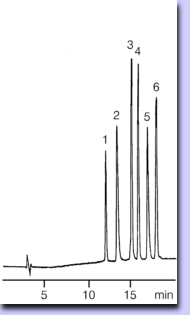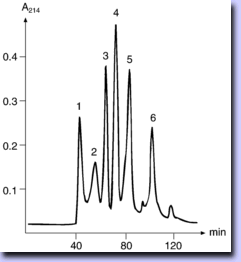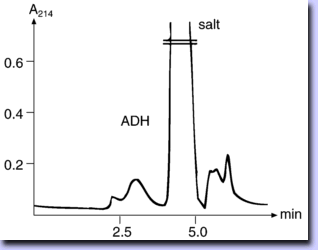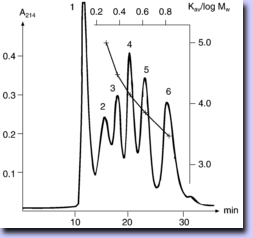Tailor-made, customized columns for particular applications
|
|
| In order to ensure the validity of HPLC results over an extended period of time,not only is the reproducibility of filling the column important but also to a high degree the batch-to-batch reproducibility of the packing material itself,whereby excellent resolution,respectively high efficiency and long stand times must be taken for granted. This is particularly true for the analysis of complex mixtures such as pesticides,polyaromatic hydrocarbons, amino acids,etc.For a range of selected applications,the time and effort of optimisation of the separation (selection of stationary phase,eluent composition,flow rate,temperature,etc.)may be eliminated simply by choosing the appropriate GROM special column. These columns are packed with stationary phases | especially developed in our R&D laboratories for a particular application.The stationary phases are subjected to stringent quality control in order to guarantee the absolute reproducibility of their selectivity for the separation in question.Each special column is accompanied by a detailed protocol of the chromatographic conditions and,where applicable,the conditions of derivatization. GROM special columns are available in both the standard NovoGROM hardware or as NovoGROM cartridges for use with quick connectors in the sizes 2,3 and 4 mm internal diameter.(Please enquire for other dimensions,e.g. NovoGROM Microbore or NovoGROM capillary columns.) |
| I. Biochemical applications | |
| To see more information just click: |
|
| Proteins and peptides | |


 *calculated on
carbonic anhydrase,peak 4 (same experimental conditions as in Applic.10 184)
*calculated on
carbonic anhydrase,peak 4 (same experimental conditions as in Applic.10 184)
